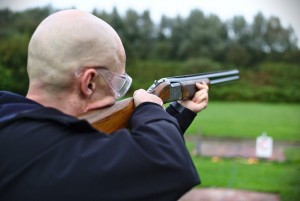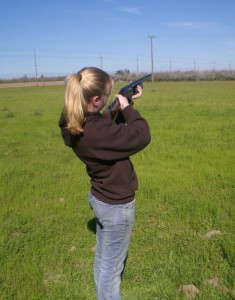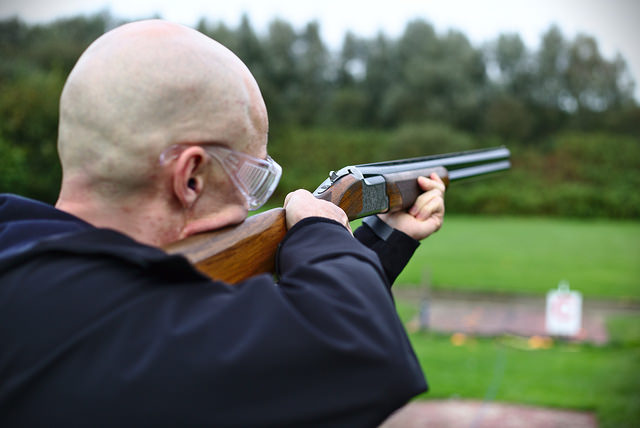You don’t own a gun. You have never fired a gun. You have no gun licence. You don’t know how to obtain a licence. You don’t know if you need a licence. You don’t know anybody who shoots. So how do you get started with clay pigeon shooting?

When you attend your introductory shooting lesson, you don’t need a licence or a gun of your own. Current legislation allows an unlicensed person to borrow a gun belonging to the occupier (not necessarily the owner, but a licensed person) of privately owned land, in his or her presence.
Do I need a licence?
However, it is a legal requirement that anybody who owns a shotgun must hold an up-to-date licence. A first shotgun licence, valid for five years and issued by the Firearms Licensing Unit of the local police force, can be obtained at a cost of £79.50 on completion of an application form (201) and a follow-up interview with a police officer. Form 201, application for a firearm and / or a shotgun licence, can be downloaded from various websites, including the BASC (British Association for Shooting and Conservation), Shooting UK (a popular UK shooting website), and your local police force’s website. A shotgun licence application can take months – or as little as three weeks; it depends on whereabouts in the country you live. We’ve written a detailed blog post on the topic here.
Where can I practise clay pigeon shooting?

There are over 500 clay pigeon shooting clubs in the UK, including 11 in Norfolk. You can find your local club by heading over to the Clay Pigeon Shooting Association. Check out our site for all your shooting accessories. Contact a club near you and book yourself onto a clay pigeon shooter beginner’s session, where you will be coached in technique, gun safety, site safety … and jargon, of course!
As a beginner, you will use a gun with a fitted recoil pad. Recoil (also known as knockback, kickback or kick) is the backward momentum of the gun when it is discharged. Being of equal force to the projectile (plus any ejected gases), the recoil is, understandably, quite a shock for a first-time shooter. Recoil pads are made from a soft material, e.g. rubber or leather, and are attached to the buttstock of the gun or strapped onto the shooter’s shoulder, which also serves to prevent the gun from slipping on clothing.
And what about clothing and essential shooting supplies?
Wear comfortable, safe shoes. Wellington boots are ideal in wet weather, and in drier conditions, walking boots or trainers are suitable. Ensure that laces are securely tied. Well-fitting clothes are essential. Tight clothing will obviously restrict movement, but baggy clothing, too, is restrictive in its tendency to get in the way.
The wearing of adequate and effective eye protection by shooters and trappers is now mandatory. It’s possible to wear additional eye protection over the top of prescription glasses; however, many people find this physically uncomfortable and a visual hindrance. As glasses are considered ‘adequate and effective’ protection, people often choose to wear either their own glasses or special eye protection.
It is advisable to wear some form of hearing protection is also compulsory when clay pigeon shooting. A discharging gun is extremely loud, and eardrum damage is irreversible. Check out advice from the Clay Pigeon Shooting Association for more advice on the exact guidelines;
You can find the BASC website here to get your Form 201. Detailed instructions on how to apply for a certificate can be found here. And guidance from the Clay Pigeon Shooting Association is available here.
If you already have your certificate, you can grab shooting supplies in our Shotgun store, and shooting accessories such as shotgun cartridges here.
And head to the Clay Pigeon Shooting Association, where you can find a club near you.

